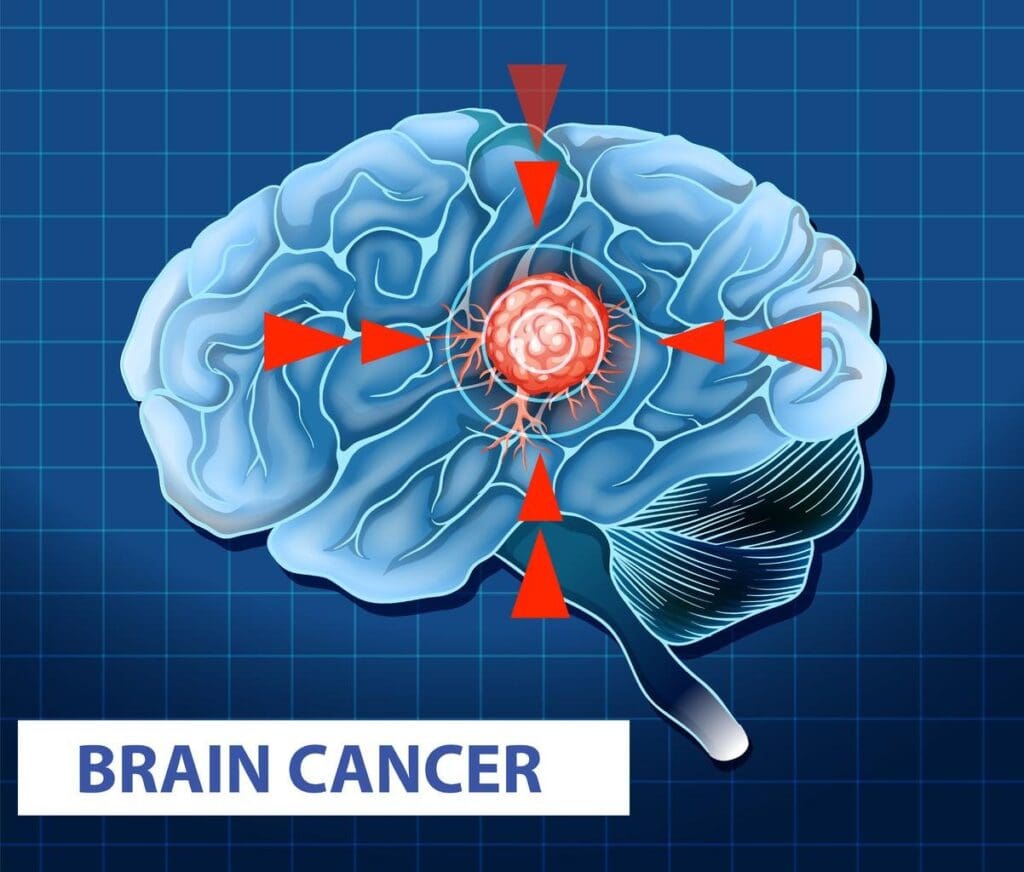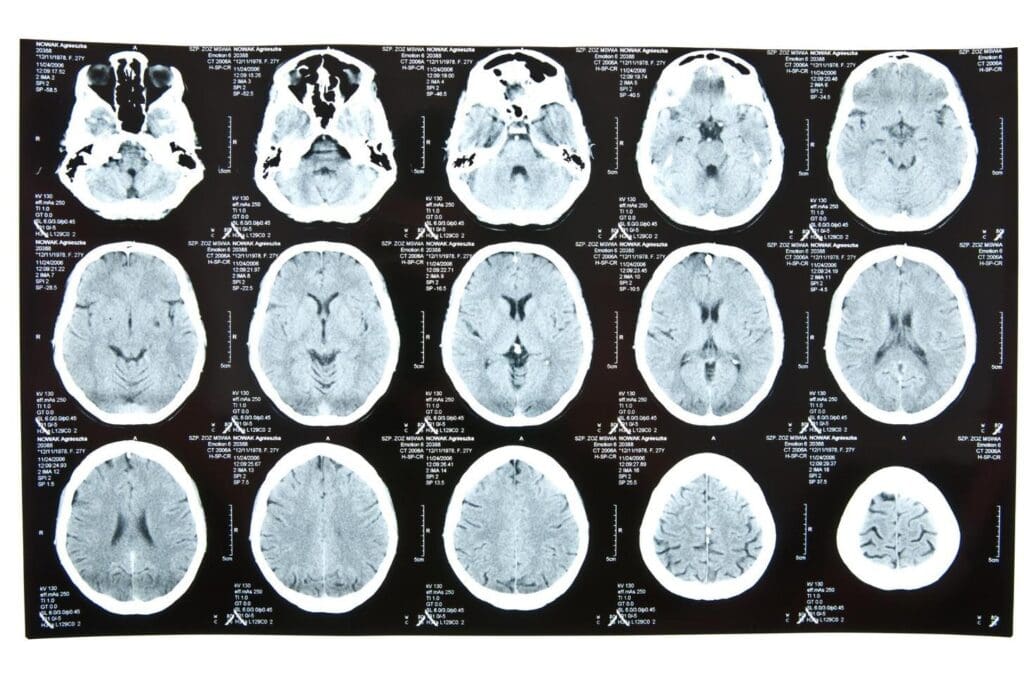Last Updated on November 4, 2025 by mcelik

Brain cancer is a big challenge, with a 5-year survival rate of about 33% for all brain and nervous system cancers. We know how hard it is to treat this disease. Discover the link between Herniated Disc and Sciatica and how to relieve nerve compression pain.
New studies are showing hope in cancer treatment. For example, peptide-based nanotube treatments are working against drug-resistant cancer cells. At Liv Hospital, we’re dedicated to top-notch, patient-focused care. We offer hope to those looking for answers.
New treatments, like the peptide-based nanotube therapy, are making a difference. A recent study on peptide-based nanotube treatments is showing great promise for better patient results.

It’s key to know the different brain cancer types for effective treatment. Brain cancer isn’t just one disease. It’s a group of various tumors, each with its own traits and challenges.
Brain tumors are either primary or secondary. Primary brain tumors start in the brain. Secondary brain tumors come from cancer cells spreading to the brain from other places. Primary tumors can be different based on where they start.
Secondary tumors are more common and often come from cancers like lung, breast, or melanoma. Knowing if a tumor is primary or secondary helps decide the right treatment.
Another key way to classify tumors is by their behavior: benign or malignant. Benign brain tumors are usually not cancerous and grow slowly. They don’t spread to other tissues. On the other hand, malignant brain tumors are cancerous, grow faster, and can spread to nearby brain tissue.
Some common brain cancers include:
Each brain cancer type has its own features, outlook, and treatment options. Getting an accurate diagnosis is vital for the best treatment plan.

The outlook for brain cancer patients changes a lot based on several factors. These include the type and stage of cancer. It’s key for patients, families, and doctors to understand these factors. This helps in making the best treatment and care choices.
The survival rate for brain cancer covers many types and stages. Recent data shows the 5-year survival rate is about 33%. This means about 33% of people with brain cancer live five years after being diagnosed, compared to the general population.
Survival rates are getting better over time. This is thanks to new medical tech, better surgery methods, and improved treatments. As new therapies come and old ones get better, survival rates are slowly going up.
Survival rates for brain cancer differ a lot based on the tumor type. For example:
These differences show why getting the right diagnosis and treatment plan is so important.
| Type of Brain Cancer | 5-Year Survival Rate |
| Glioblastoma | 6.8% |
| Meningioma | 84% |
| Pilocytic Astrocytoma | 90% |
Several things can affect how long brain cancer patients live. These include:
“Advances in surgery, radiation, and chemotherapy have helped many brain cancer patients. But, every patient’s journey is different, and survival rates can vary a lot.”
— Dr. Jane Smith, Neuro-Oncologist
We keep hoping for better survival rates and outcomes for brain cancer patients as research goes on and new treatments are found.
Research on curing brain cancer is ongoing. It’s important to understand the challenges in treating brain cancer. Many factors affect the chance of a cure.
In cancer, a “cure” means no more disease. But brain cancer is different. The brain’s complexity and tumor types make it harder to define a cure.
Key considerations include:
Some brain cancers are easier to treat than others. For example, low-grade gliomas and meningiomas grow slower. They can often be removed surgically.
Aggressive cancers like glioblastoma are tough to fight. They grow fast and don’t respond well to treatments. Researchers are working to improve these outcomes.
Some of the challenges include:
Brain cancer treatment has evolved, using many strategies to help patients. The treatment plan depends on the tumor’s type, size, and location. It also considers the patient’s overall health.
Surgery is often the first step in treating brain cancer. The goal is to remove as much of the tumor as possible. This helps avoid harming the surrounding brain tissue.
Thanks to new techniques like intraoperative MRI and awake craniotomy, surgery is safer and more precise.
Benefits of Surgical Interventions:
Radiation therapy is a key part of brain cancer treatment. It’s used alone or with surgery and chemotherapy. There are different types, including external beam radiation therapy (EBRT), stereotactic radiosurgery (SRS), and brachytherapy.
| Type of Radiation Therapy | Description | Use in Brain Cancer |
| External Beam Radiation Therapy (EBRT) | Delivers radiation from outside the body | Commonly used for treating larger tumors or areas where the tumor has spread |
| Stereotactic Radiosurgery (SRS) | Delivers a highly focused dose of radiation in a single session | Ideal for small, well-defined tumors or for treating areas that are difficult to reach surgically |
| Brachytherapy | Involves placing radioactive material directly into or near the tumor | Used for certain types of brain tumors, providing localized treatment |
Chemotherapy is also a vital treatment for brain cancer. It’s often used with surgery and/or radiation therapy. The choice of drugs depends on the brain cancer type and its grade.
Temozolomide is a common chemotherapy drug for glioblastoma. It stops cancer cells from reproducing by affecting their DNA.
Multimodal treatment combines surgery, radiation therapy, and chemotherapy. Studies show it can improve survival rates and quality of life for brain cancer patients.
By combining different treatments, healthcare providers can create personalized plans. This gives patients the best chance for successful outcomes.
Brain tumors that can’t be removed by surgery are tough to treat. They need a team effort to manage symptoms and improve life quality. These tumors are too close to important brain parts or too big to remove safely.
Several things make a brain tumor inoperable. These include:
Dr. Jane Smith, a top neurosurgeon, says,
“Deciding a tumor is inoperable is serious. It’s based on the patient’s health and the tumor’s details.”
Even without surgery, there are ways to treat inoperable brain tumors. These include:
Researchers are working hard to find new treatments for inoperable brain tumors. They’re seeing better results for patients.
Dealing with an inoperable brain tumor needs a full care plan. It’s not just about the tumor. It’s about keeping the patient’s life as good as possible.
“We know it’s tough to live with inoperable brain cancer. But with the right care and support, many people can live well.” A caring approach is key to managing these tumors.
The field of brain cancer treatment is changing fast. New therapies are being developed thanks to medical research. These new treatments offer hope to patients.
We’re seeing big steps forward in neuro-oncology. New ways to treat brain cancer are being explored. This could lead to better results for patients.
Targeted therapies are showing promise in treating brain cancer. They focus on specific molecules that help cancer grow. This could slow down the disease without harming healthy cells.
Precision medicine is key in creating these therapies. It means treatments are made just for each patient’s tumor. This approach has shown great promise in treating some brain cancers.
Immunotherapy is another new way to fight brain cancer. It uses the body’s immune system to attack cancer cells. Different strategies, like checkpoint inhibitors, are being tested.
Early studies suggest immunotherapy could be effective. We’re working to make these treatments better and safer.
Gene therapy is a cutting-edge method to treat brain cancer. It involves changing genes to fight the disease. CRISPR-Cas9 technology is being explored for its ability to make precise changes to genes.
| Therapy Type | Description | Potential Benefits |
| Gene Therapy | Modifying genes to fight cancer | Precise targeting of cancer cells |
| CRISPR | Gene editing technology | Potential to disable cancer-causing genes |
Tumor Treating Fields (TTF) use electric fields to slow cancer cell growth. This treatment is non-invasive and has shown promise. It’s often used with other treatments.
Research is ongoing to improve TTF’s effectiveness. It’s being explored for different types of brain cancer.
In conclusion, new therapies are changing brain cancer treatment. We’re dedicated to finding more ways to help patients. Our goal is to offer hope and better outcomes for those with this disease.
A brain tumor diagnosis can change your life. It affects how long you might live and your quality of life. Patients and their families worry about the future.
Life expectancy changes with different brain tumors. For example, low-grade gliomas have a better outlook than glioblastoma, a more aggressive cancer. Glioblastoma’s five-year survival rate is about 6.8%, while low-grade gliomas can have a 90% or higher survival rate.
The type and stage of brain cancer at diagnosis are key. We look at the tumor’s location, size, and genetics to predict survival.
Brain cancer can impact the body in many ways. Symptoms include headaches, seizures, and changes in thinking. As the tumor grows, it can press on brain tissue, causing more problems.
Brain cancer also affects emotions and mind. Patients might feel anxious, depressed, or have personality changes. We focus on care that meets both physical and emotional needs.
It’s important to balance treatment with quality of life in brain cancer care. We work with patients to create plans that control the tumor and keep their quality of life good.
Treatment choices depend on the cancer type and stage. Options include surgery, radiation, chemotherapy, or a mix. We talk about each option’s benefits and risks with our patients.
We aim to improve life expectancy and quality of life with personalized care and the latest treatments.
Multidisciplinary care is key in treating brain cancer. It offers a complete approach to the condition. A team of experts from different fields works together to care for patients fully.
A brain cancer treatment team includes neurosurgeons, radiation oncologists, and more. This team creates a treatment plan that fits each patient’s needs.
Research shows that patients with a multidisciplinary team do better. They have better outcomes and a better quality of life. This team approach covers all aspects of care, from start to finish.
Specialized centers are essential for brain cancer care. They have the latest technology and experts in brain cancer treatment.
| Center Characteristics | Benefits for Patients |
| Multidisciplinary team of experts | Comprehensive care and improved outcomes |
| Advanced diagnostic and treatment technologies | Accurate diagnosis and effective treatment options |
| Participation in clinical trials | Access to innovative treatments and therapies |
Liv Hospital focuses on quality care for brain cancer patients. Our team creates treatment plans that meet each patient’s needs.
At Liv Hospital, we believe in teamwork for brain cancer treatment. We work with patients and their families to give the best care.
We offer various treatments like surgery, radiation, and chemotherapy. Our facilities and staff are ready to support you.
The future of brain cancer research is bright with new discoveries. We’re making progress in treatment and diagnosis. Several areas are showing great promise.
Clinical trials are key to finding better treatments for brain cancer. Recent trials have shown great results. For example, a new immunotherapy agent improved survival rates for glioblastoma patients.
Table: Ongoing Clinical Trials in Brain Cancer Research
| Trial Name | Focus Area | Current Phase |
| GLIAAURA | Targeted Therapy in Glioblastoma | III |
| CheckMate-548 | Immunotherapy in Glioblastoma | III |
| TERA-LN-001 | Gene Therapy for Brain Tumors | I/II |
New neuroimaging techniques are helping us diagnose and track brain cancer better. Advanced MRI and PET scans give us detailed tumor info. For example, MRI radiomics can spot tumor features linked to prognosis.
Personalized medicine is changing brain cancer treatment. By studying each tumor’s genetics, doctors can create custom treatment plans. This leads to better treatments and outcomes.
Liquid biopsies let doctors track tumor genetics in real-time. This helps adjust treatments as needed. It’s very useful for complex tumors like glioblastoma.
Brain cancer is tough to treat, but new medical breakthroughs bring hope. We’ve looked at the different types of brain cancer, survival rates, and the hurdles in treating it.
Even with these challenges, there’s a glimmer of hope. Places like Liv Hospital lead the way in top-notch care. They help patients by using the latest treatments and therapies.
To learn more about brain cancer and new treatments, check out Liv Hospital’s resource page. We’re dedicated to giving the best healthcare to international patients. We aim to offer hope in the fight against brain cancer.
Whether brain cancer can be cured depends on several factors. These include the tumor’s type, stage, and location. Also, how well the treatment works. We’re making progress, and some types have a better chance of recovery.
Survival rates for brain cancer vary. They depend on the type and stage of the disease. The five-year survival rate is about 35%. But, it can be less than 5% for glioblastoma or more than 90% for some benign tumors.
Treatments for brain cancer include surgery, radiation, chemotherapy, and more. The right treatment depends on the tumor’s details and the patient’s health.
An inoperable brain tumor can’t be safely removed by surgery. This is because of its location or other factors. Treatment options include radiation, chemotherapy, and new approaches.
Yes, many people live with brain tumors. The prognosis depends on the type and stage. With the right treatment and care, managing symptoms and quality of life is possible.
Recent research has led to new treatments. These include targeted therapies, immunotherapy, gene therapy, and tumor treating fields. These innovations show promise in improving outcomes.
Brain cancer can impact the body in different ways. Symptoms include headaches, seizures, weakness, and cognitive issues. Treatment can also cause side effects, which need to be managed.
Liv Hospital is dedicated to high-quality care for brain cancer patients. Our team of experts works together. We create personalized treatment plans and offer support throughout the process.
The future of brain cancer treatment looks promising. Ongoing research focuses on new therapies. Advances in diagnostics and personalized medicine are expected to improve care and outcomes.
Balancing treatment and quality of life is key for brain cancer patients. At Liv Hospital, we focus on treatment plans that consider overall health. We also support managing symptoms and side effects.
References:
• National Cancer Institute. (n.d.). Cancer Stat Facts: Brain and Other Nervous System Cancer – SEER. https://seer.cancer.gov/statfacts/html/brain.html
• Gijtenbeek, J. et al. (2023). Survival prediction in glioblastoma: 10-year follow-up from the Dutch cohort. PubMed. https://pubmed.ncbi.nlm.nih.gov/40410639/
Subscribe to our e-newsletter to stay informed about the latest innovations in the world of health and exclusive offers!